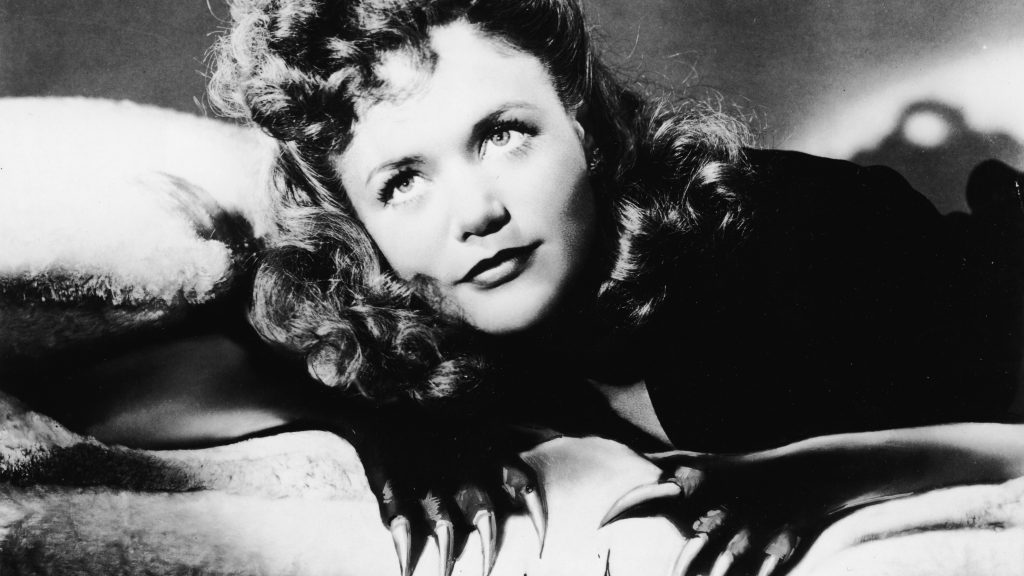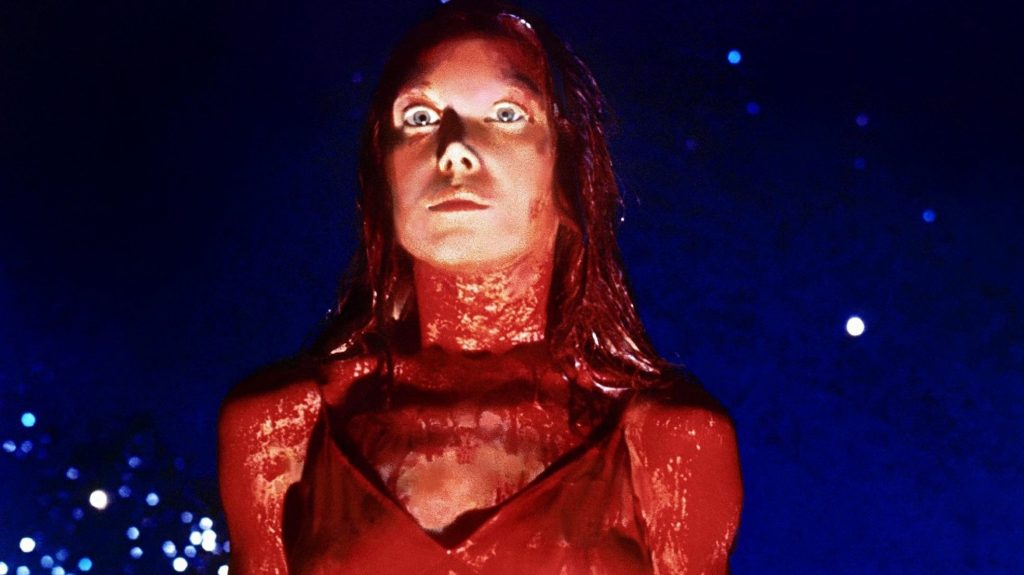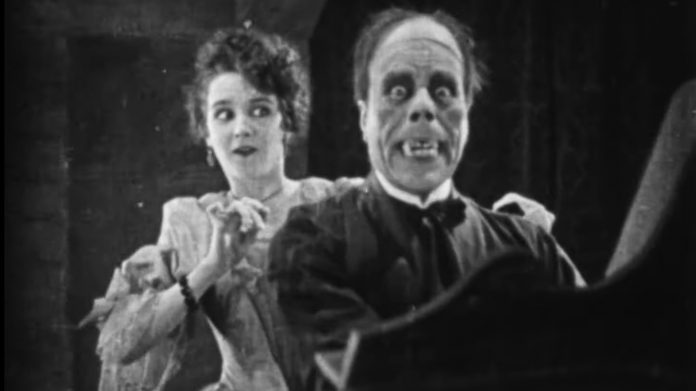As the spookiest night of the year approaches, let’s look at one of cinema’s defining techniques—the jump scare.
The jump scare is one of the most effective techniques a filmmaker has in their arsenal. Regardless of who you are, when the screen is dark, the music is rising, the tension is building, and something suddenly pops up, it makes you jump. It’s something that exploits the most primitive side of us. So, let’s look at where it came from.
The first major film (that has survived) to use any form of a jump scare would be 1925’s Phantom of the Opera. The Phantom’s mask is torn off to reveal the iconic shot of Lon Chaney with pins in his nostrils, revealing the famous, horrifying face we all know now. This is an early jump scare, it is not as effective now as it would have been in 1925. Phantom was a silent film, with no synchronised recorded sound, meaning no musical score. Showings of silent films would almost always be accompanied by live orchestral music, but we have no reference for what that music would have been in 1925 (there was a re-issued sound version of Phantom in 1930, but it was lost in a fire). Sound can be integral to a jump scare. It builds, getting louder and louder, before cutting out to painful silence. Then boom; a loud high-pitched noise makes the scare not just visual but auditory too. And so, the lack of original music makes it difficult to imagine what it was like in 1925. Apparently, audience members screamed with horror and even fainted, which sort of seems ridiculous now.
The success of Phantom led to Universal making many more horror films, in a collection that came to be known as Universal Monsters. These include the likes of Dracula (1931), Frankenstein (1931), The Invisible Man (1933), Werewolf in London (1935), and The Wolf Man (1941), as well as many sequels to all of these. However, the jump scare was something new. The gothic horror of Universal’s early monster films didn’t lend itself to jump scares where the horror was more atmospheric. Finding jump scares from the same era as Phantom is difficult. It wasn’t until almost 20 years later we’d see it in a major Hollywood production again.

The most famous and earliest effective jump scare comes from 1942’s Cat People. Cat People was really the first film to know how to deliver on a jump scare. It’s the first record of a fake jump scare too. In the scene, Alice is walking down a street, being followed by Irene, one of the titular Cat People. It’s dark, she’s looking over her shoulder. Her pace quickens, and she is scared, it’s dead silent, the audience is on tenterhooks, and then… a bus innocently pulls into the frame with its brakes loudly hissing and making the audience scream like fools. This is so famous the technique of a fake-out jump scare became known as the Lewton Bus, named after the film’s producer Val Lewton. This was incredibly effective and has what the Phantom scare lacked; sound. We can hear Alice’s footsteps getting quicker, we can hear her breathing getting faster, and we hear the obtusely loud bus hiss into the frame, all synchronised. This is the scene to which all modern jump scares can trace their heritage.
However iconic or effective Cat People proved to be, it didn’t set off a trend of jump scares in every film. There are a few jump scares throughout the 1950s, though, one of the most mainstream ones appearing in 1951’s The Thing from Another World. However, the next truly great jump scare came in 1960. It’s difficult to talk about techniques used in horror without mentioning the master of suspense, Alfred Hitchcock, and specifically without mentioning Psycho, featuring of the most famous scenes in cinematic history. As Marion is in the shower, the audience is introduced to the shadow of a person behind the curtain who slowly approaches with a knife. And then, to the sound of screeching music, the curtain is pulled back, and Marion is murdered. People reportedly screamed and fainted during this scene back in 1960.
Psycho develops on what Cat People did. Cat People, unlike Phantom, had sound, but it didn’t have a musical score (though it could have done and isn’t a technological limitation, just a creative decision). The shower scene from Psycho has one of the most famous pieces of film music ever composed, Bernard Herrmann’s shrieking strings as Marion is slainmaking the scene even more jumpy and terrifying. The success of Psycho led to some more jump scares popping up in films like The Haunting (1963), Wait Until Dark (1967), and Night of the Living Dead (1968). One of the most famous jump scares that came after Psycho was in 1965’s Repulsion. Repulsion was the first time the ‘closing the medicine cabinet to reveal a threat’ jump scare was used (a technique then parodied in 2004’s Shaun of the Dead). Few, however, could rise to the same level as Psycho, and it was Hitchcock who arguably perfected the modern jump scare.

There are several famous jump scares littered throughout the 1970s, like the minor ones in The Exorcist (1973) or Jaws (1975), and particularly Brian De Palma’s Carrie (1976), which is often cited as the first modern mainstream jump scare. But it was the rise of the slasher subgenre that catapulted the jump scare into popular culture; The Texas Chain Saw Massacre (1974) Halloween (1978), Friday the 13th (1980), Nightmare on Elm Street (1984), Child’s Play (1988), Scream (1993), and many others. It was these decades that took a niche cinematic technique and turned it into a phenomenon. Eventually, it became an over-relied on trope, and many people even called for the jump scare to be retired. But tracing back its roots across all of cinema gives a new appreciation of the technique’s effectiveness when used right.
Since its inception almost 100 years ago, the jump scare has found many forms. It has been defined and redefined, perfected and re-perfected. Many directors have tried, and many have failed, and many more will get the chance to play in the cinematic horror sandbox. Those directors will likely find a new way to use the jump scare to terrify audiences for years to come. The jump scare is a staple of horror, and looking into where it came from gives a whole new perspective on where it is, how it got there, and where it will go next.
Words By Lewis Royle
Support The Indiependent
We’re trying to raise £200 a month to help cover our operational costs. This includes our ‘Writer of the Month’ awards, where we recognise the amazing work produced by our contributor team. If you’ve enjoyed reading our site, we’d really appreciate it if you could donate to The Indiependent. Whether you can give £1 or £10, you’d be making a huge difference to our small team.

Thank you for the amazing blog post!